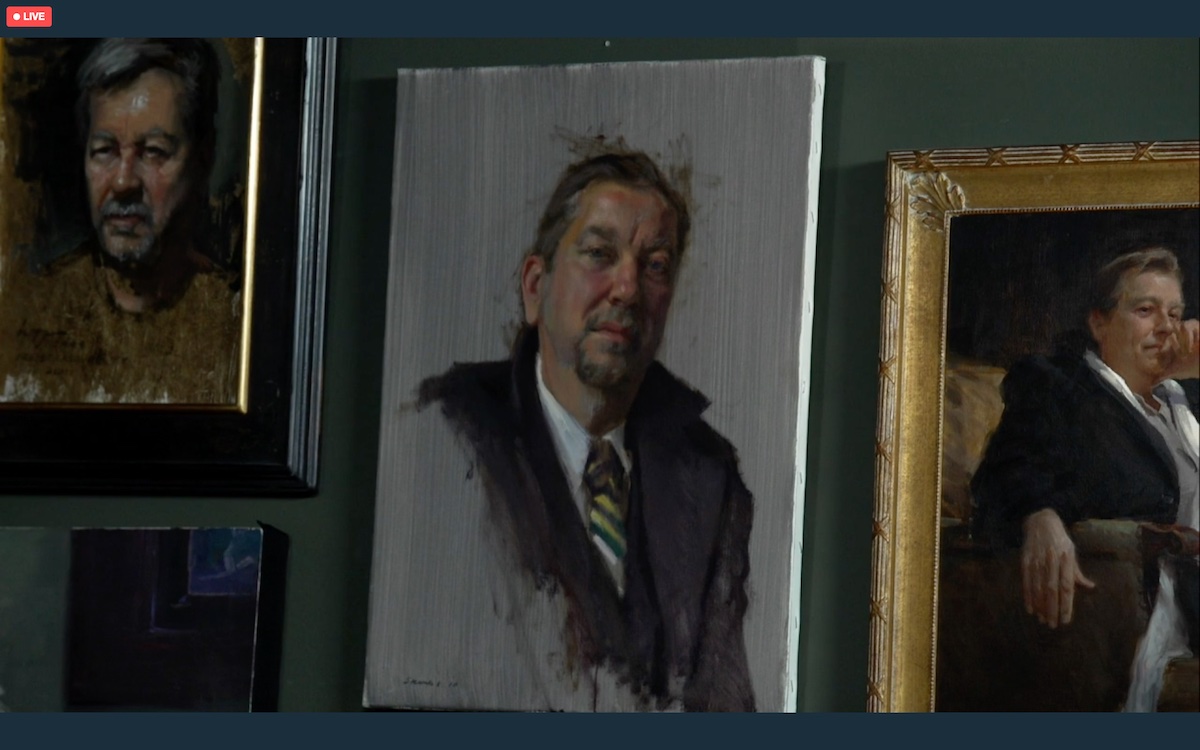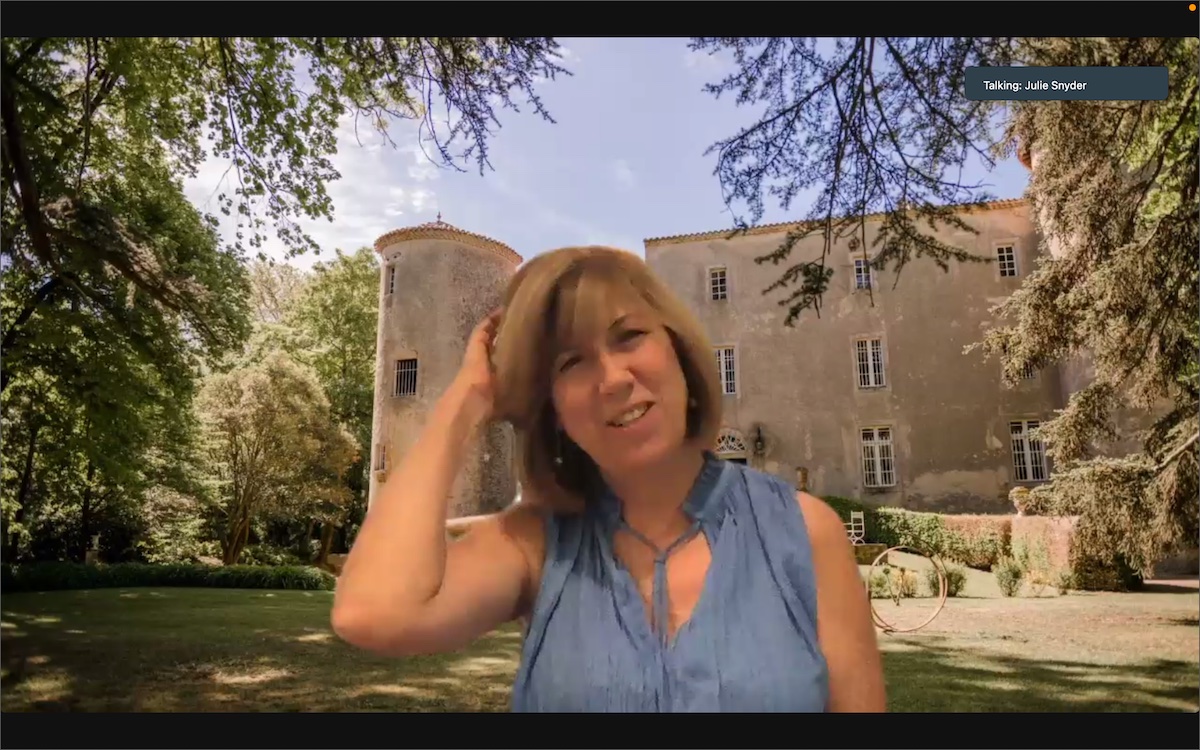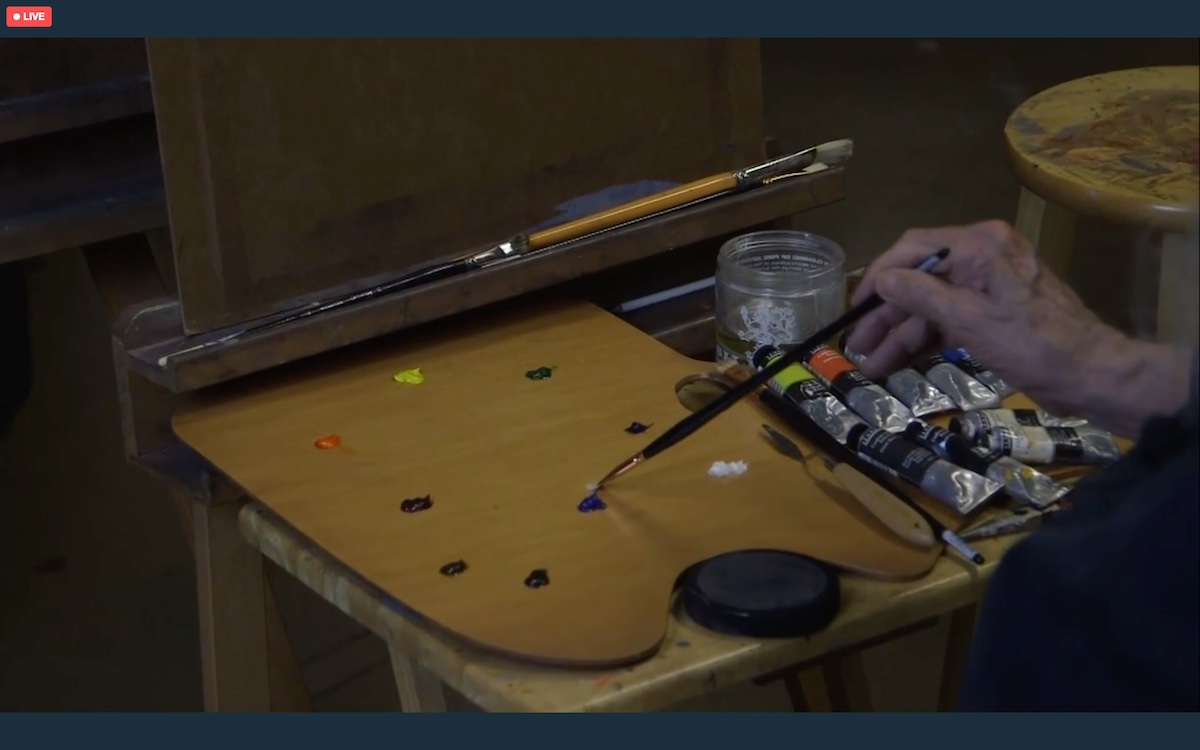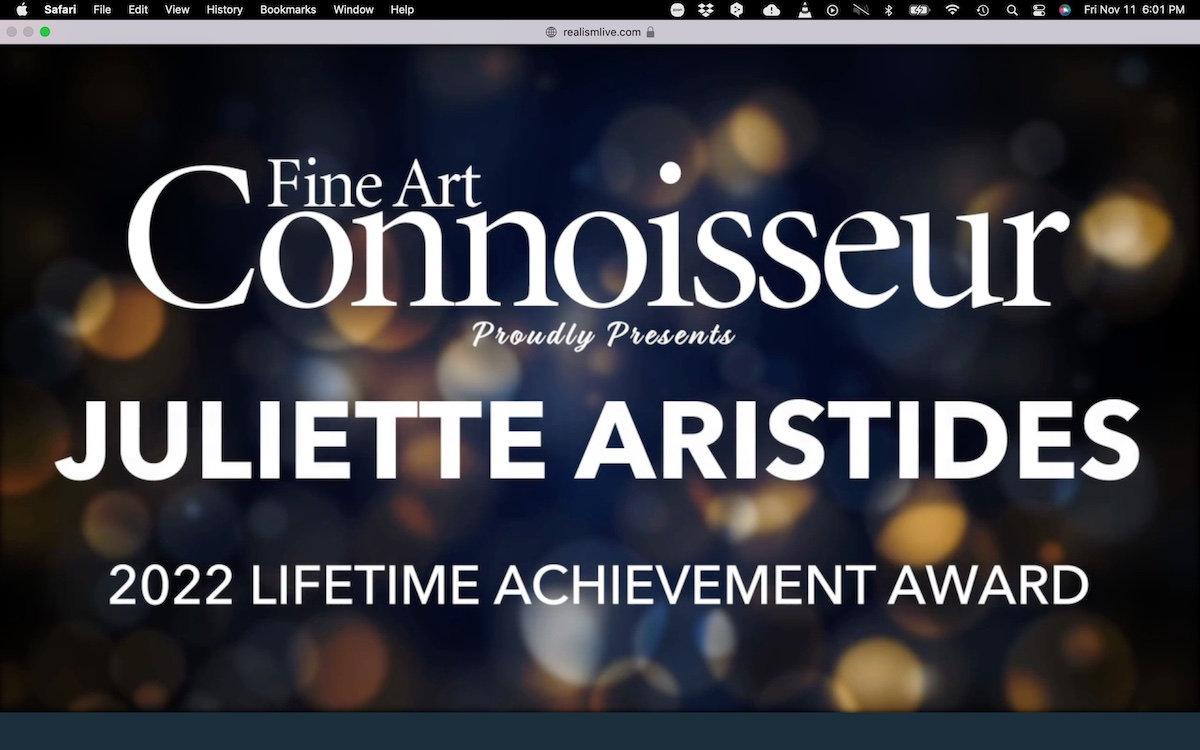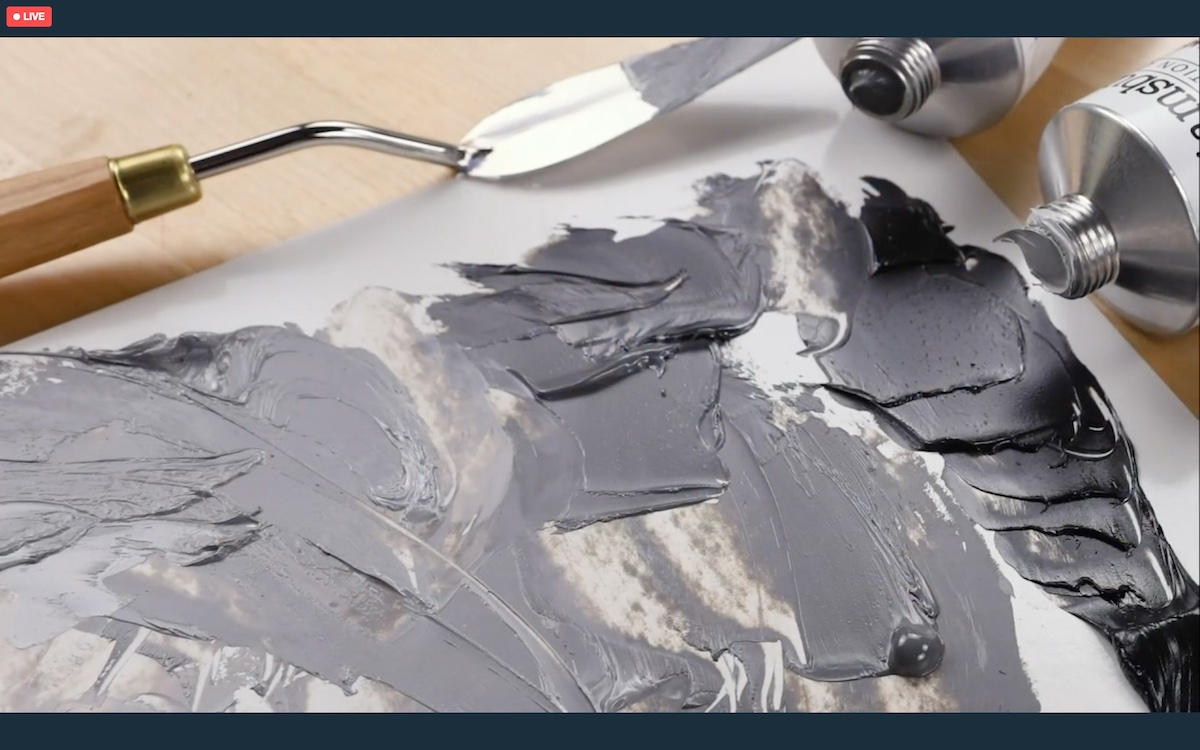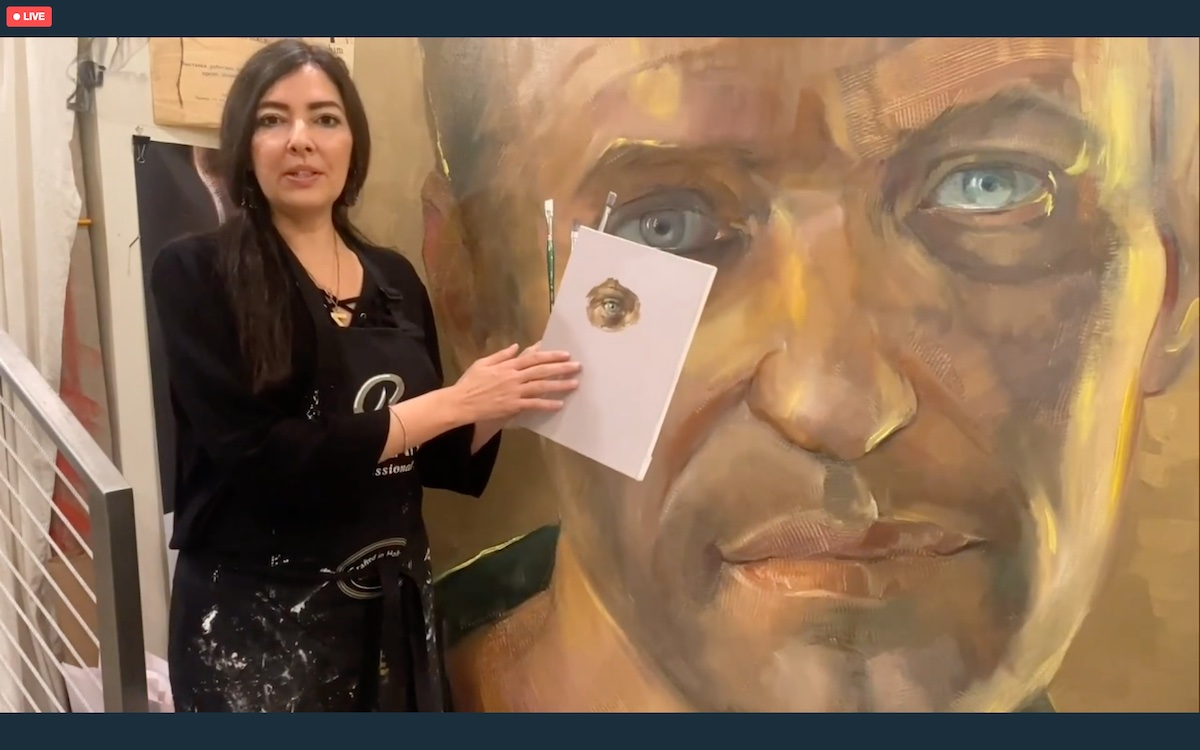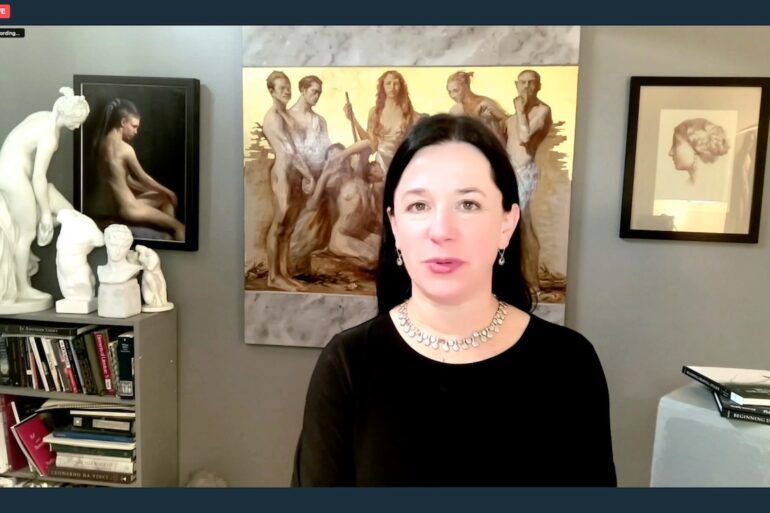
This post is also available in:


In addition to the array of demonstration sessions offered, the second day of Realism Live celebrated the awarding of the prestigious Fine Art Connoisseur Magazine Achievemet Award, 2022: the prize established at FACE -Figurative Art Convention and Expo- which was presented to Juliette Aristides.
The artist, who emotionally thanked the audience and the event organizers, symbolically dedicated the award to all those who in recent years have strived, like her, to invest in the beauty of art in a society that seems devoted more to the cult of technology and the immediacy of results than to inner development. These are characteristics that are little suited to the inner quest to which art yearns allowing one to refine not only the capacity for observation and reflection but increasing the degree of personal sensitivity toward the beauty of the world in all its expressions.
A task that, however, does not seem to have demotivated Aristides who, in order to offer her contribution to society, decided to pursue the beauty of art through the teaching of universal principles, for which she founded the Classical Atelier at the Gage Academy of Fine Art in Seattle, WA, where she teaches.
Recognition for Juliette Aristides is due not only to her numerous career awards, totally devoted to study and teaching, but also to the dissemination of her many books, made accessible and usable to all, even in terms of cost. Among the most important awards received by Aristides, who in her career has also been the beneficiary of the Elizabeth Greenshields Foundation, is the designation of Living Master by the ARC, Art Renewal Center: the world’s highest honor for realism in all its forms.
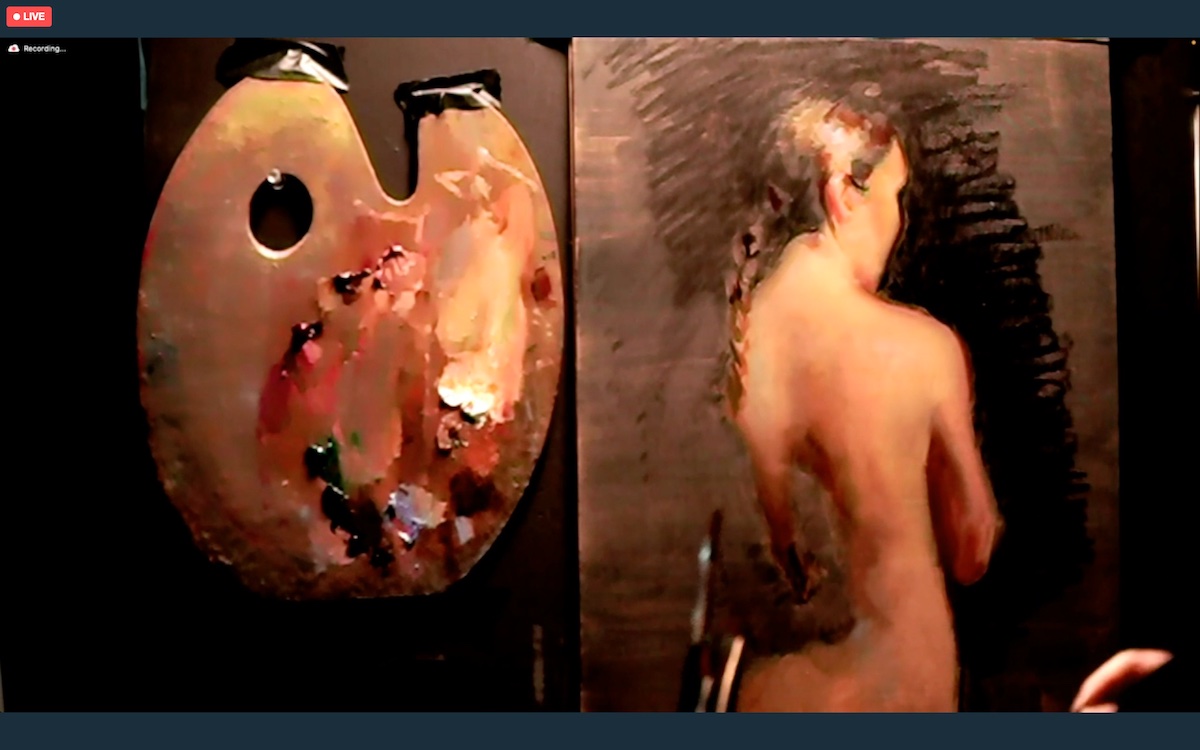
In addition to receiving the award, Aristides made a figurative painting for Realism Live based on the classical principles that proceed from the realization of large forms to the definition of details. Having little time and in order to speed up the process by experimenting with an innovative medium, she created a figure in oil, surrounded by a flat background made with large brushstrokes of liquid charcoal: a versatile-and visually non-invasive medium that lets the full beauty of the depicted subject emerge. It is a construction process that can be difficult for those who lack the necessary basics that involve continual checking of measurements and proportions to ensure the success of the drawing, but with practice and perseverance can lead to excellent results.
The sensitivity of Aristides in addition to the person, is also inherent in the advice she offered with simplicity to the participants, inviting them to establish a personal relationship with the model posing, so as to establish a human contact that prescinds the function to object of the person. “Today’s world is getting unaccustomed to this kind of attention that makes a difference,” said the artist, who advocates more cultural support for society.
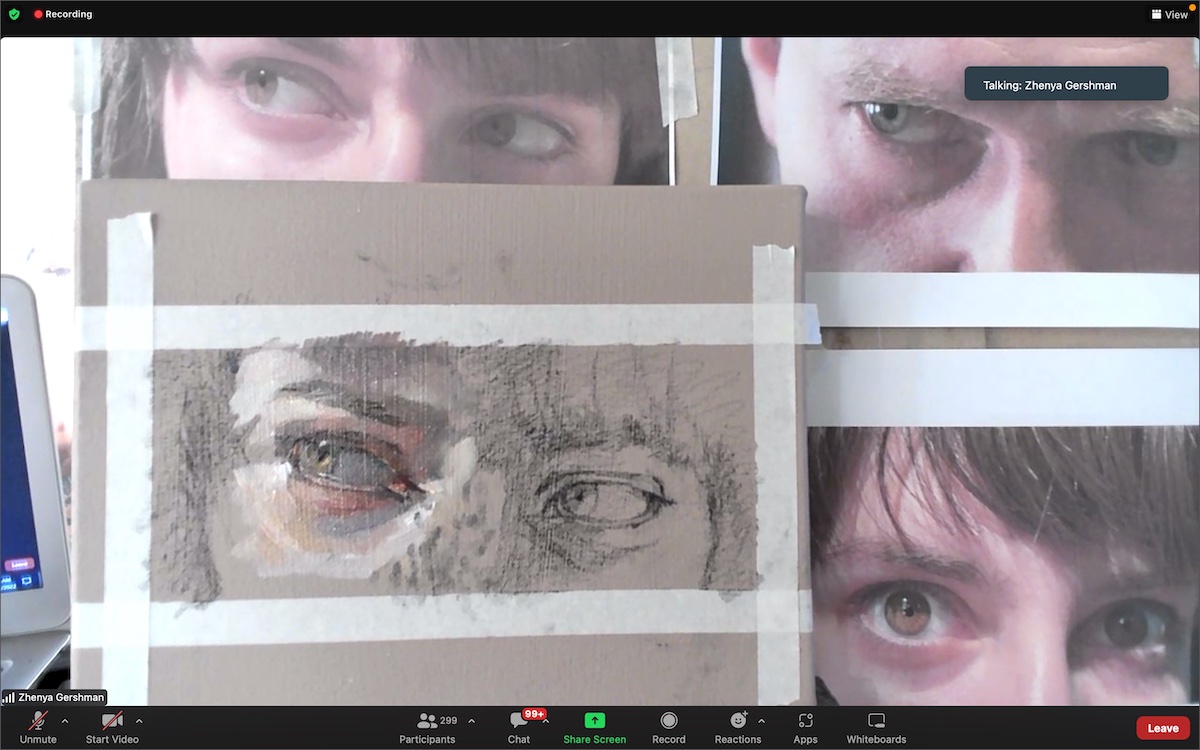
The educational day began with a demonstration by artist Zhenya Gershman, Art Ambassador for Royal Talent and Blick Art Materials, Platinum Sponsors of the event.
The sponsors’ demonstration sessions, presented during Streamline Publishing conventions, are particularly uplifting moments, both because they feature the newest products on the market and because the sponsors, in addition to offering in-depth technical seminars, often rely on demonstrations by established artists who dispense tricks to adopt. Such is the case with Zhenya Gershman, who, using Princeton brushes and Rembrandt oils, created a demonstration focused on the realist construction of the eye. The artist, a resident of Los Angeles, is known for the large oil canvases she creates using also different tools, such as the one proposed in yesterday’s seminar: the Princeton catalyst countours and wedges, with which she created interssing textures.
Among the favorite colors of Gershman, who says she is madly in love with oil painting, is Rembrandt’s Caput Mortuum (dead head). A color also known as cardinal purple, and which owes its name-probably of alchemical origin-to the residue due to oxidation of the element.
Inspired by her studies of Rembrandt, her favorite painter, Gershman said the secret of a good painting lies in the correct use of color, which she uses translucent for the shaded areas and dense to emphasize the brighter higlight areas.
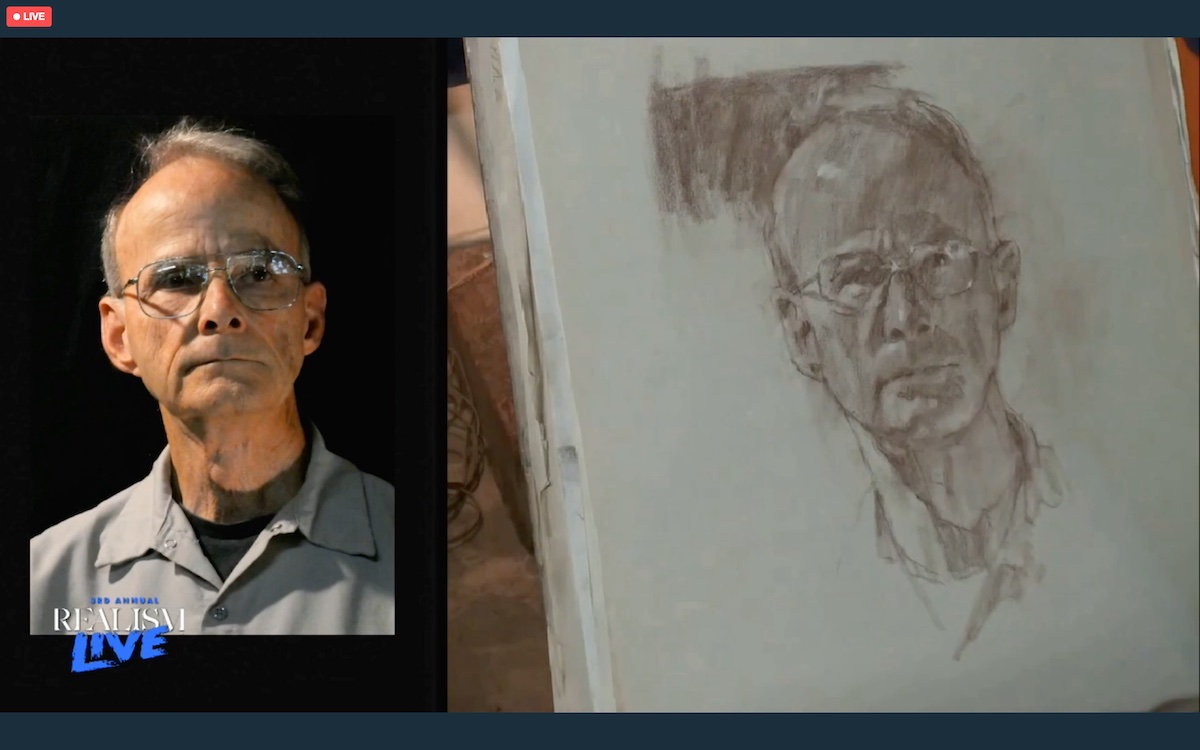
It was Eric Rhoads who introduced Ned Mueller: Master Artist of the American Impressionist Society and the Oil Painters of America and especially great friend and mentor of Eric Rhoads in his early plein air sessions.
Ned Mueller is an artist with sixty-five years of experience behind him that have made him “strong” in representing all subjects: from portraits to figures, from animals to landscapes.
That said, Mueller confessed to having a lot of fun in the realization of live portraiture in charcoal, which is why, for the event, he made a portrait of his friend -and artist- Robert Johns. A person the artist confessed that he knows him well to the point of being among the few who can distinguish him from his homozygous twin brother: a merit due to the observational skills gained over the years also thanks to work in the field of illustration: in fact, he was a consultant for the Walt Disney Imagineerin.
In addition to reiterating the importance of experimenting with materials so as to find those best suited to one’s needs, Mueller stressed that in drawing-which for the artist is equivalent to painting-the “three P’s” rule is important: patience, perseverance and practice. “In art, the only secret is to practice. That way we can believe in the skill our eye develops,” said the artist, who does not take measurements during the compositional process by orchestrating tonal values in a continuous back and forth and treating the planes of the head as individual compositional elements. “In drawing as in painting we can change everything because we can adjust tonal values and make edges softer or harder,” said the artist whose result was a fresh, loose and accurate portrait that brought out the essence and character of the subject.
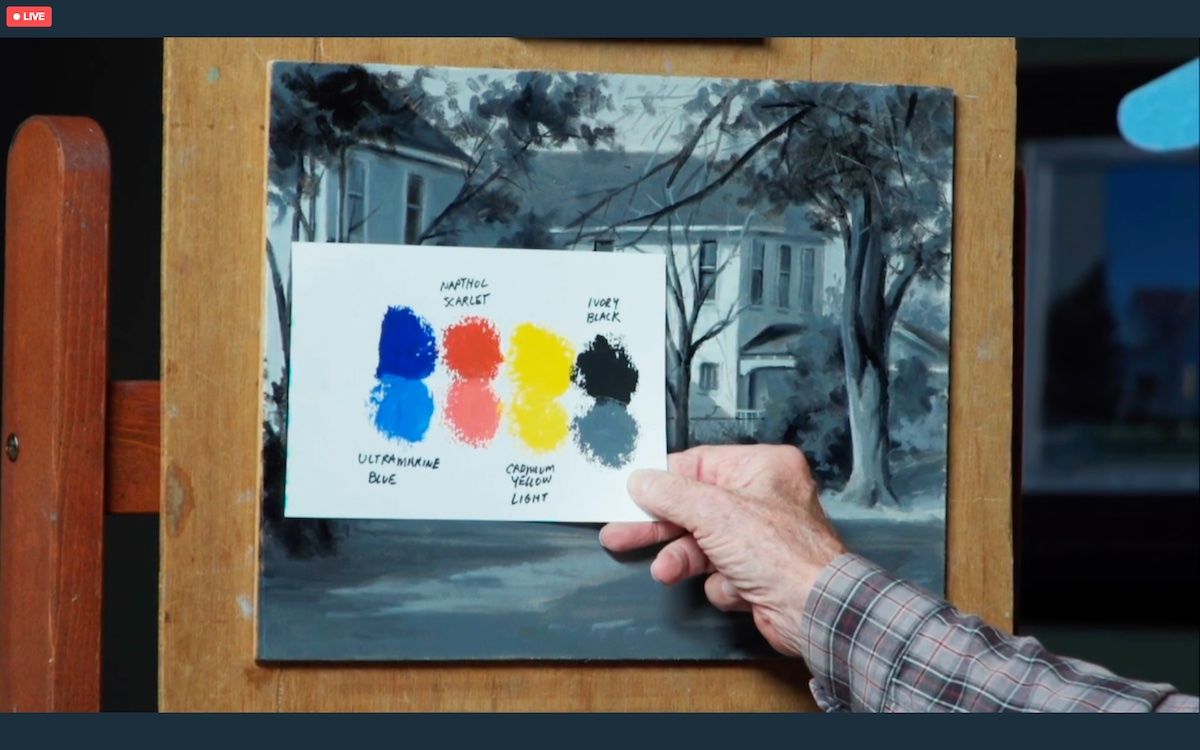
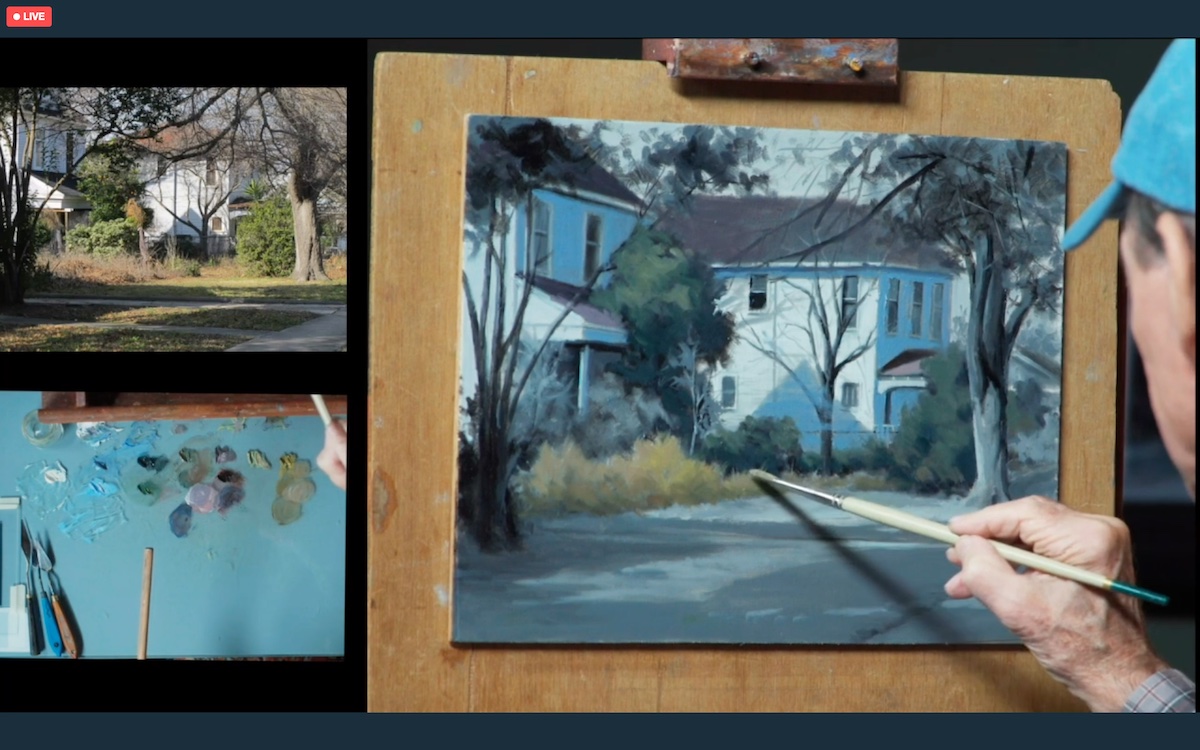
“First the values and then the colors” is the mantra of John Pototchnik: a celebrated English-born landscape painter who grew up in America and is most famous for his studies concerning the use of a limited palette with which to develop an unlimited amount of colors.
For the demonstration, in which, as is customary, he spent a great deal of time in the making of preliminary work, he used subtle underpainting in a monochromatic tonal scale consisting of five gray values and on which he then laid down a limited palette of colors. “If you learn to do a good drawing in black and white you will be able to do a better job later with color,” said the artist, who guaranteed assured results for all those who follow the method imparted during the demo. A method that also helps a lot in the study of color harmony and that one participant called:” revolutionary and capable of totally transforming the study of tonal and chromatic values.”
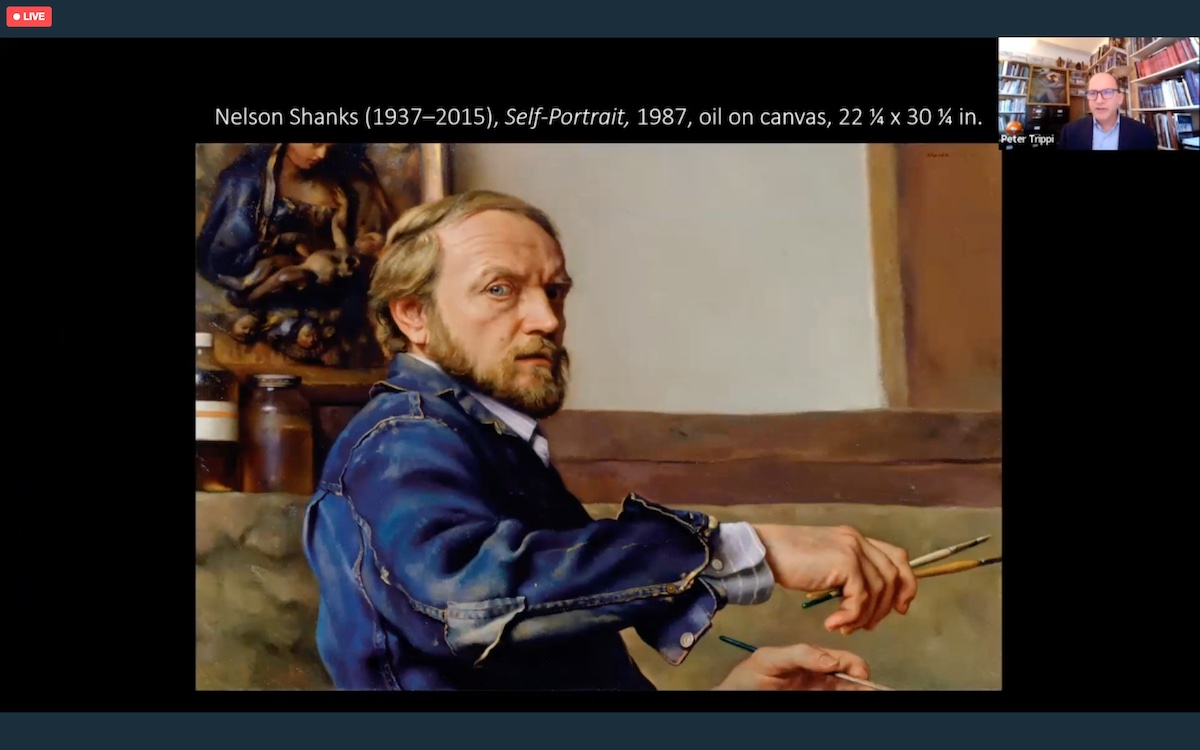
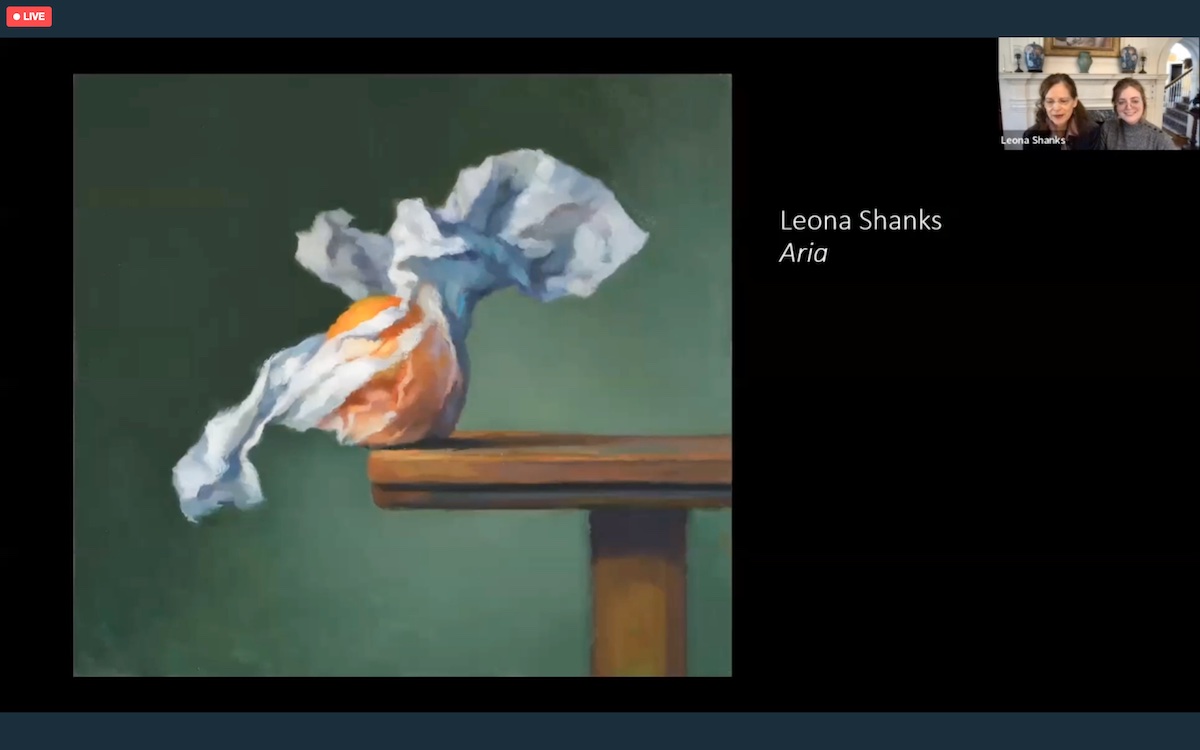
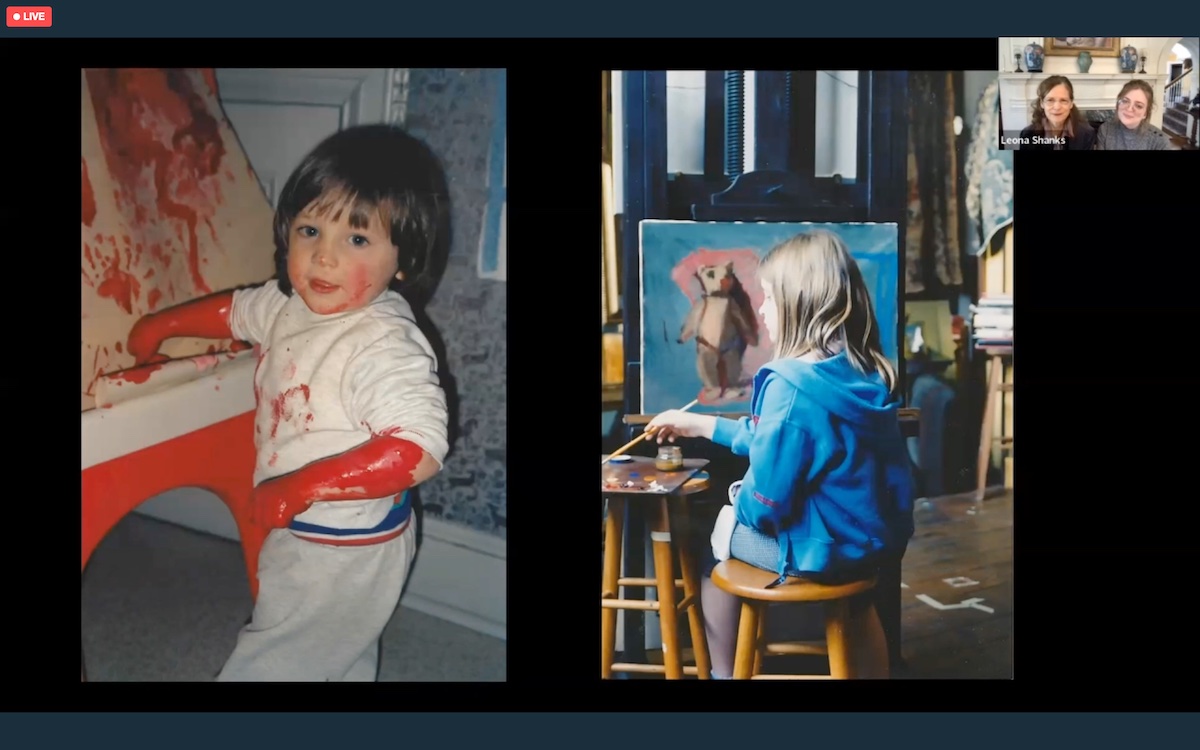
The session hosted by Peter Trippi, editor in chief of Fine Art Connoisseur Magazine, art critic and co-presenter of Realism Live, was an informal conversation in the company of people who have made great contributions to the world of contemporary realism. The critic, in the company of Leona, Alexander and Annalisa Shanks, -respectively: the wife and co-founder with her husband in 2002, of the prestigious Studio Incamminati in Philadelphia, and Nelson Shanks’ son and daughter, also students in the institution- put on a very poetic celebratory session in which alongside some emblematic works by the artist, who passed away in 2015, they showed personal works that keep alive the legacy of Nelson Shanks and his teachings.
Motivating the artist’s stylistic choices, the family members, highlighted his exceptional technical carat based on shapes and colors and his particular vision of art, for which he maintained, “If you want to make a mistake then make it big.” A truly intimate and emotional moment that participants will remember for a long time. The Philadelphia-based Studio Incamminati, accredited by the National Association of Schools of Art and Design, represents excellence in the world of traditional and contemporary realism, and you can view the training program and proposed activities by typing on the following link: https://studioincamminati.edu
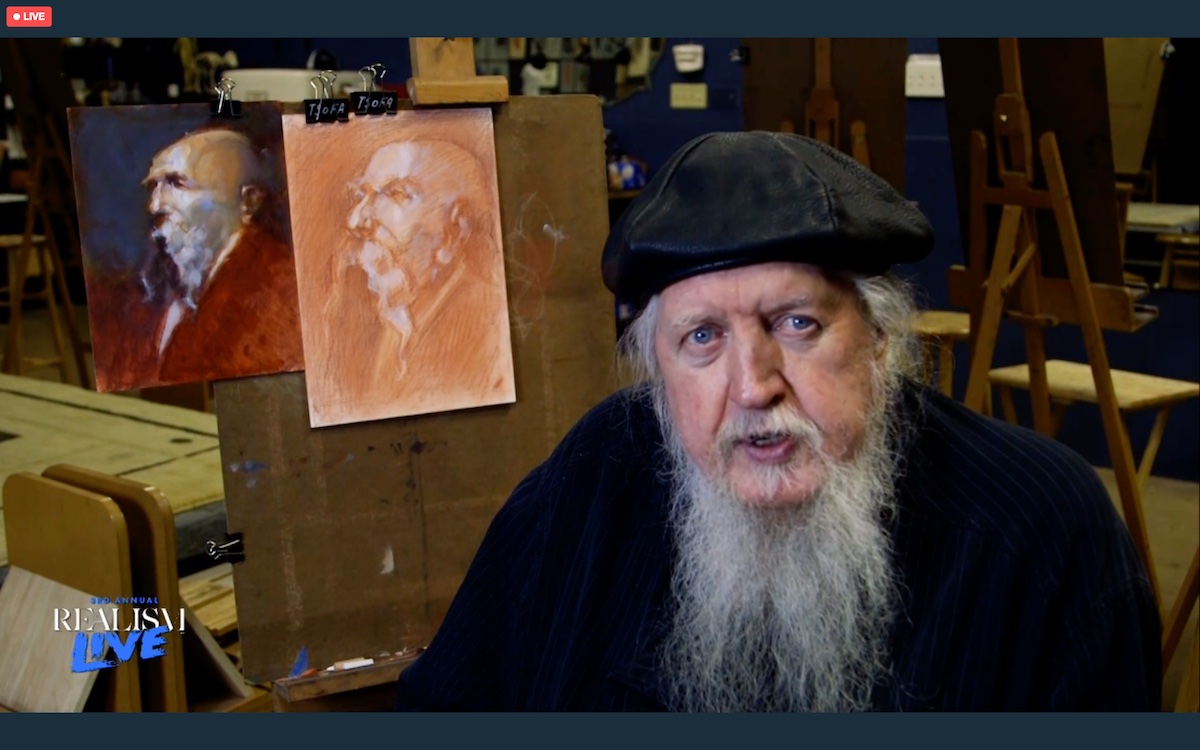
Undisputed master of the methods imparted in the Renaissance era Michael Mentler is also known as “the contemporary Leonardo.” In addition to performing a demonstration with Sennelier oil paints for Savoir-Faire, Platinum Sponsor of the event, the artist created a Renaissance-style demonstration session.
Taking as reference an oil portrait executed in the past -a product of his imagination- he wanted to reinterpret the figure using a very fascinating artistic medium: sanguine. A medium that had its heyday in the Renaissance era and has recently come back into vogue because of the dramatic and timeless appeal it lends to drawing. In the particular Mentler used different qualities of sanguine, which he varied according to the needs of the stroke, darker or darker and harder or softer. For harder strokes he used PIPO, the authentic Renaissance drawing chalk that has a higher hardness than sanguine.
The key to understanding the execution of the painting made by Mentler with unparalleled mastery was the alternation of multiple layers of cross etching, arranged on a tonal scale, corresponding to the anatomical structure, alternating with the shading, executed with brush, chamois and eraser, from which he derived the light tones, accentuated by the use of white pastel spread with brush. Mentler, who has been described by master Ned Mueller as: “a master of head animation,” said that to execute a realistic and natural drawing it is necessary to follow the compositional rhythm of the image.
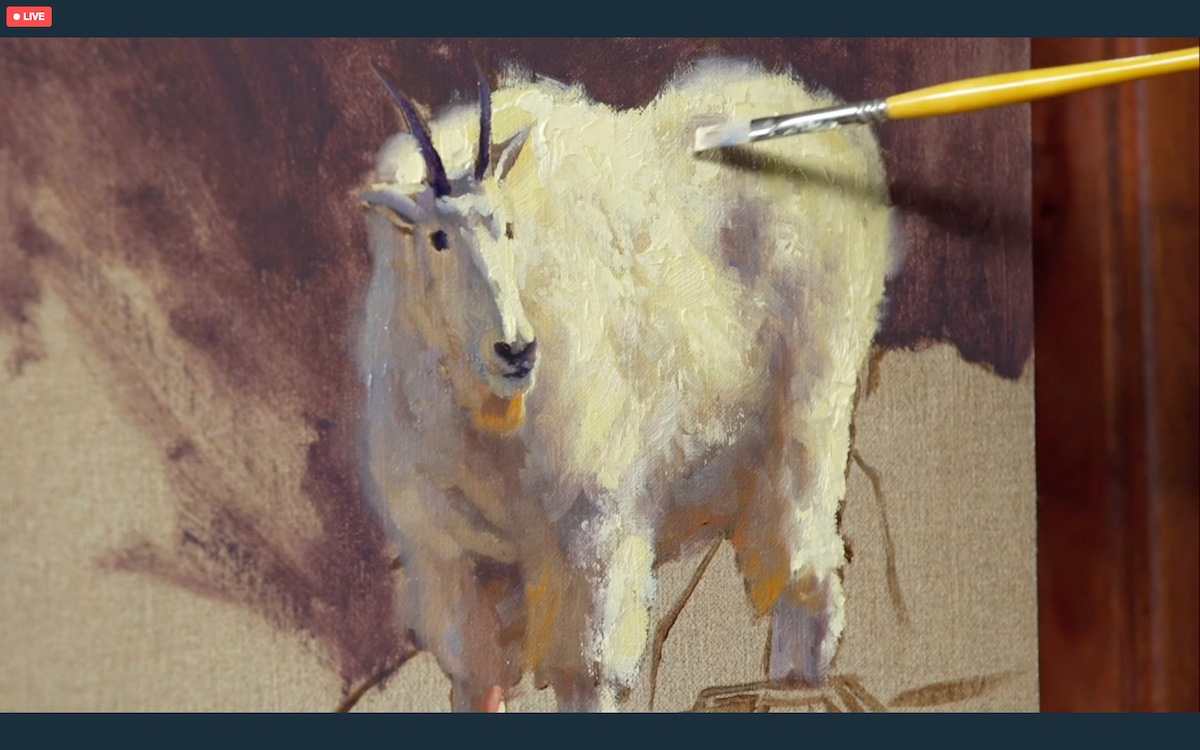
Dustin Van Wechel, is among the greatest American animal artists, and has been one of the public’s most beloved protagonists, both because of the type of subject depicted and the compositional choice involved. The artist chose a photographic reference that he personally took on one of his focused trips to places such as: Montana, Wyoming, Colorado, Alaska, and Canada, which are rich in animals in the wild. He chose a white mountain goat: an intentional choice to allow him to highlight the reception of colors on the animal’s coat in relation to its surroundings. Indeed, white is one of the most difficult coat types to manage because of the thousands of tonal and chromatic nuances involved. During the demo, the artist focused on two indispensable elements in the representation of the animal coat: the direction of the brushstroke, which must be variegated, and the texture rendered with small touches of color that follow the animal’s volume and that he realizes very subtly in the first layers to end with the spreading of the color with a small palette knife. The use of light layers of color allows for the development of depth in the coat, which is essential for the final realistic rendering of the animal. Pointing out the importance of variegating tonal and color temperature and direction of brushstroke, he recommended using different brushes according to the type of animal coat, more or less soft.
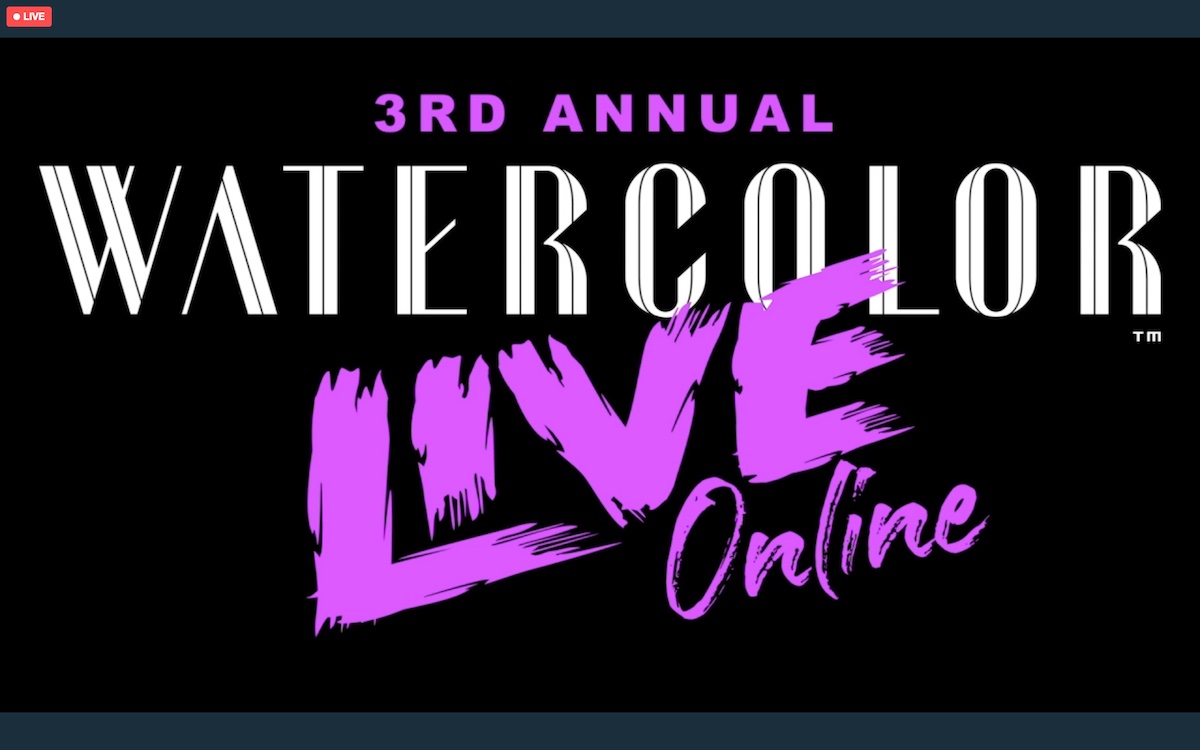
The second day of Realism Live closed with the announcement of Watercolor Live, which will be online Jan. 26-28, 2023 with optional beginner’s day on Jan. 25. Sign up and keep following Miami Niche for the third and final day of Realism Live.
(on the title: Juliette Aristides, the winner of the Fine Art Connoisseur Lifetime Achivement Award, 2022)
